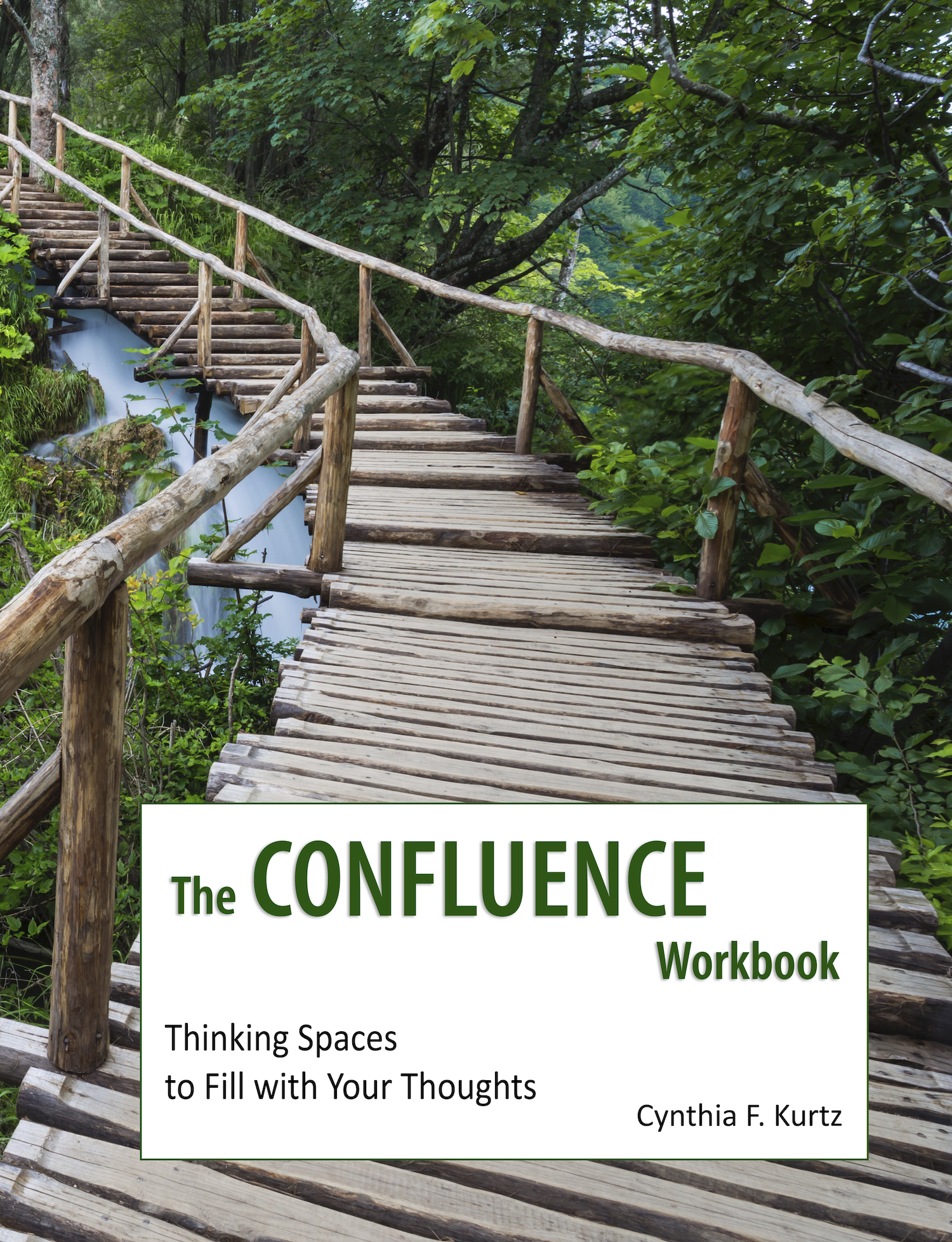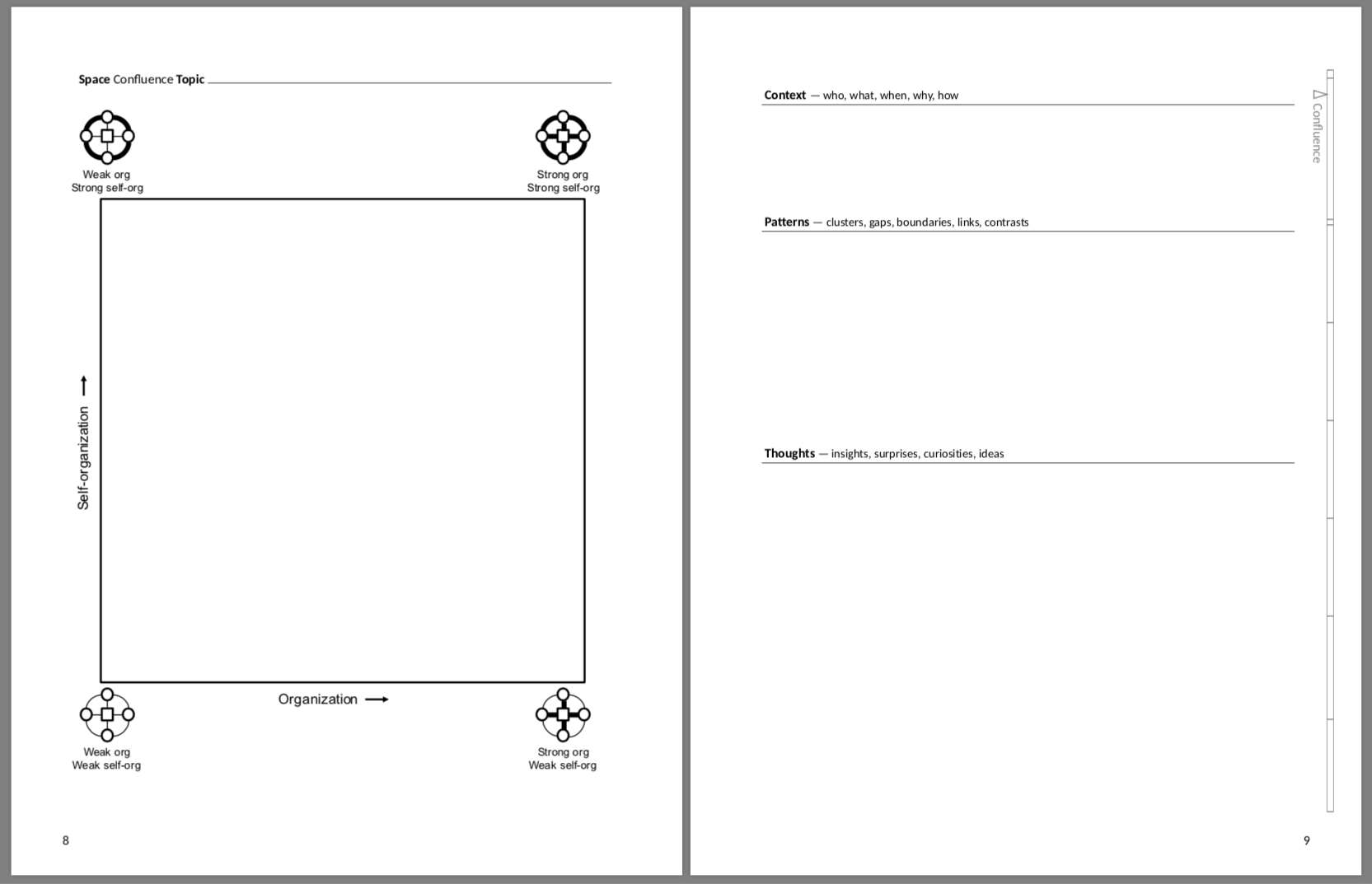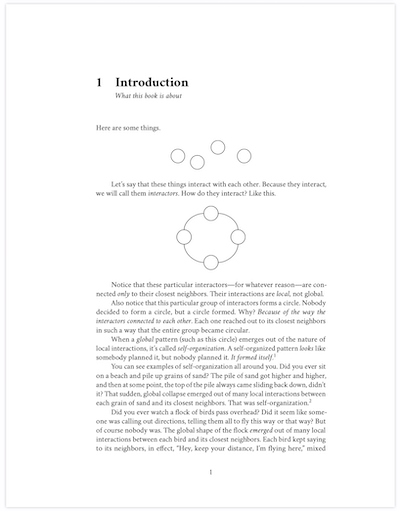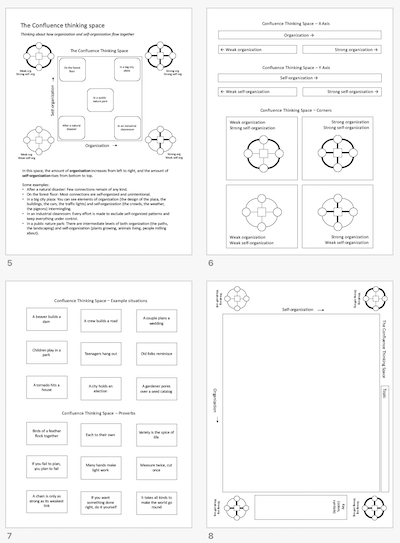
CONFLUENCE
Tools for Thinking about How Organized Plans and Self-organized Patterns Flow Together
by Cynthia F. Kurtz
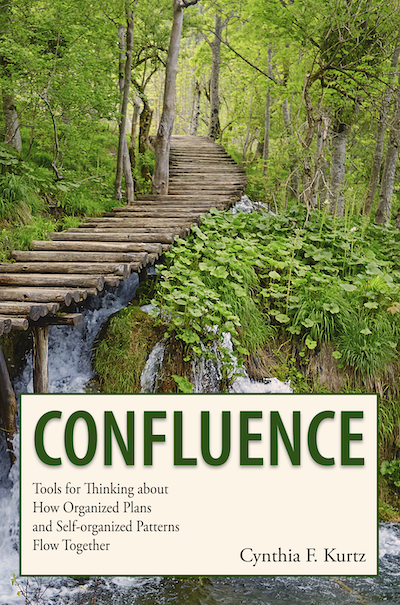
Shop now at Amazon.com
A path winds its way through a forest. Why does it go the way it goes? Did someone design it? Or was the path made smooth by feet that chose the smoothest path? Maybe some of both?
Confluence examines the many ways in which organized, intentional plans (like paths we design) and self-organized, unintentional patterns (like paths that emerge where we walk) intermingle (happen at the same time and place) and interact (influence each other). The book lays out seven “thinking spaces” (like this one) that explore various aspects of the structures and relationships that flow together in our lives.

Confluence includes copy-ready materials for a group exercise you can use to think about how organization and self-organization flow together in situations that matter to your life, work, family, community, and organization.
Table of Contents
- 1 Introduction - What this book is about
- Part One: A Thinking Tool and an Exercise that Uses It
- 2 The Confluence Thinking Space - Thinking about how organization and self-organization flow together
- 3 Using the Confluence Space - An exercise in situational awareness
- Part Two: Six More Thinking Tools
- 4 The Jungle - Thinking about self-organization
- 5 The Plan - Thinking about organization
- 6 Inundation - Thinking about how self-organization influences organization
- 7 Regulation - Thinking about how organization influences self-organization
- 8 The Mix - Thinking about how organization and self-organization interact
- 9 Connecting the Dots - Thinking about what happens when both forces are (or seem) weak
- Back matter: Postscript, Acknowledgements, Exercise Materials, Notes, Index, About Me
book - workbook - printables - praise - errata/addenda - media - faq

